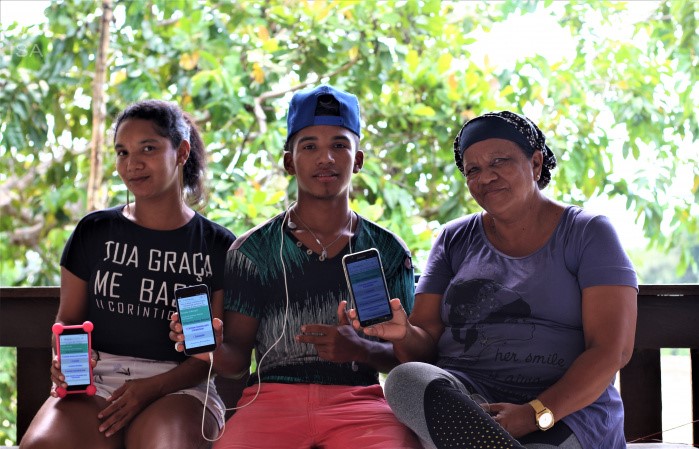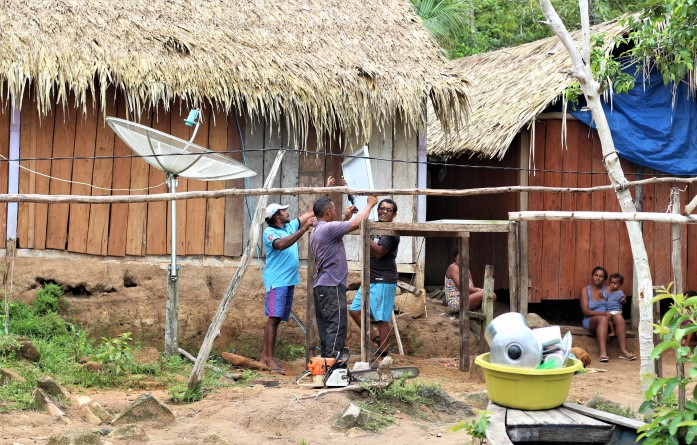
As part of the “Connecting the Unconnected: Supporting community networks and other community-based connectivity initiatives” project, 11 community network initiatives were selected in 2019 to receive catalytic intervention grants, aimed at supporting innovative, sustainable and gender-aware uses, developments and appropriations of technologies to strengthen a diverse and sustainable community network movement. Specifically, these grants aimed at exploring activities that were advancing community networks around the role of women within networks, collaborative mechanisms for dispersed communities to work together on open source tools, improved access to spectrum, local content development and technological innovation. You can find more detail on the different types of initiatives funded here.
We are sharing stories from the participating organisations about the local impacts of the work they carried out with the help of this funding. This story highlights the results of a project jointly carried out by Instituto Socioambiental (ISA) and the Brazilian Association of Digital Radio (ABRADIG), who worked together with local and indigenous communities, particularly with women, young people and those involved in permacultural initiatives, to co-create an appropriate digital two-way communication system (specifically through high frequency or HF radio) that serves their needs and local context and understands their needs for access to knowledge and digital communication. A technical project description can be found here. The story was originally written in Portuguese by Isabel Harari and published on the ISA website.
Beiradeiro (riverside) communities from the Terra do Meio Extractive Reserves in Pará, Brazil can now send documents through their radio system thanks to a partnership between the communities and the Brazilian Digital Radio Association (ABRADIG). The groundbreaking digital data transmission system, called HERMES, enables secure connections for text and photo exchange across an area of hundreds of kilometres, in a region where radio is one of the main communication channels.
HERMES em ação (HERMES in action) from Rhizomatica Communications on Vimeo.
Between October and November 2019, seven digital radio stations were installed or improved in collective spaces such as cantinas (community rural trading posts) and health care centres in the Iriri River and Riozinho do Anfrísio Extractive Reserves. When deciding where to install the radio systems, the project prioritised women-led initiatives such as the Rio Novo power plant, coordinated by Raimunda Rodrigues, and the São Francisco cantina, managed by Laura Mendes and Patrícia Silva.
With more than 50 shortwave radios in Terra do Meio – where internet access is limited – this new radio system will be an important tool for monitoring the territory and improving communication between cantinas and for health and education purposes.

Deuzairis, Alailson and Lilian, a nurse at the Morro do Anfrísio health care centre, accessing the system by smartphone. Photo: Roger Godoy-ABRADIG
"There are several ways of using the radio system. This innovation is inspiring,” said Nando Lima, a consultant for several local associations in the region. “With the support of other partners, we are going to seek resources in order to expand this technology to other Terra do Meio communities,” he added.
Under good transmission conditions, it is possible to send encrypted text files in four minutes and encrypted photos in 15 minutes. People can access this system through their web browser on any smartphone or computer through a Wi-Fi connection that the device itself generates through the digital radio system.
ABRADIG developed the interface to facilitate communication between local communities. “The shortwave digital communication solution that we are developing is the only one publicly available at the moment for the Amazon region. It uses the best modulation and network protocol techniques for this type of telecommunication system,” explained Rafael Diniz, the radio system's main architect and developer.

Members of the community of Morro Verde in the Riozinho do Anfrísio Extractive Reserve installing solar panels. Photo: Roger Godoy-ABRADIG
All the communities received training to use the device and participated in the installation and improvement of the radio stations, including the installation of antennas, solar panels, charge controllers and batteries. The project plans to expand the system with three more stations in the Rio Xingu Extractive Reserve in the following year.
Translated by Nadège